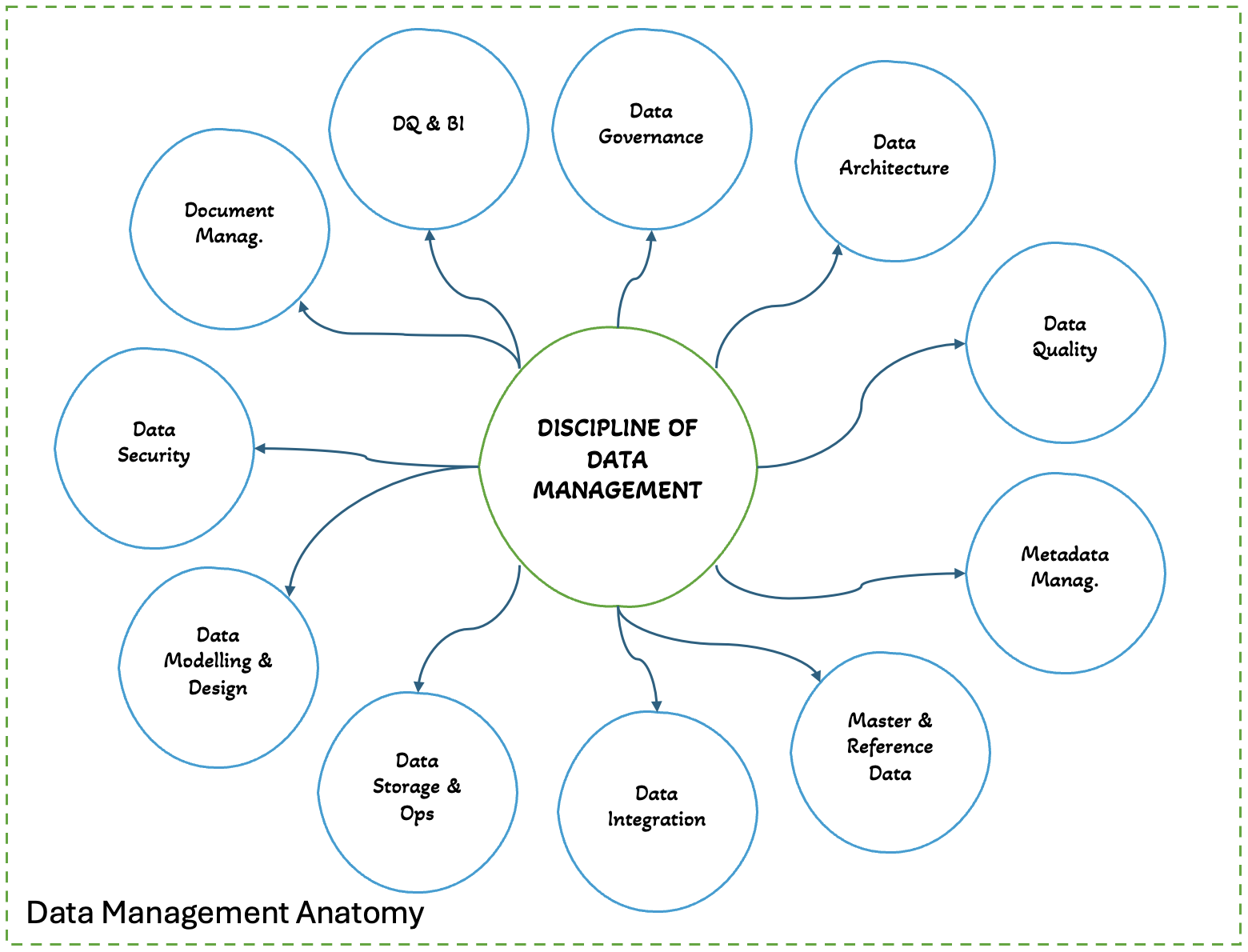11 Disciplines of Data Management — A Structured Approach to Untangling Chaos
What Sparked This Thought
Ever felt like data is spinning out of control? I used to think we just needed a better pipeline. But then I realized—we were trying to run without warming up.
Think of Data Management as your body. You need all your muscles working in sync.
Here’s a breakdown of the 11 core data disciplines—and how they show up in the real world:
Data Governance – Your brain: it defines control. 🧠
Data Architecture – The skeleton: holds everything in place. 🦴
Data Quality – The immune system: stops the garbage. 🛡️
Metadata Management – Your memory. 🗂️
Master & Reference Data – The spine: supports identity. 🦴
Data Integration – The circulatory system: moves things around. ❤️
Data Storage & Ops – Muscles and skin. 💪🫱
Data Modeling & Design – Muscular structure. 💪
Data Security – Your firewall skin. 🔐
Document Management – The limbs: carry other stuff. 🦵✋
DW & BI – Vision and interpretation. 👀
My Understanding
Data Management is not one team’s job. It’s a federation of connected capabilities, such as:

- Data Governance
- Data Architecture
- Data Integration
- Metadata Management
- Data Quality
- Data Security
- Data Storage & Operations
- Data Modeling & Design
- Master & Reference Data
- Data Warehousing & BI
- Document & Content Management
Each area solves a distinct problem — but together they form a complete strategy for sustainable data use.
Real-World Use Case: The 11-Lane Highway
Imagine a financial institution launching a new product.
Risk wants accurate customer data. Marketing wants segmentation data. Legal wants compliance data.
But each team defines “customer” differently.
By introducing a shared data governance framework (spanning these 11 disciplines), they created alignment, trust, and reusability — turning chaos into collaboration.
Key Takeaways
- There is no silver bullet — only a complete toolkit.
- Assigning owners for each discipline helps avoid blind spots.
- Think of these domains like muscles — you need to train all of them.
Questions I’m Still Thinking About
- How can we visualize these disciplines in a simple, engaging way for business teams?
- Should each product squad be paired with a data steward by default?
- What does a “minimum viable” data management capability look like?
Final Thoughts
If data is your organization’s nervous system, these 11 disciplines are your reflexes, memory, and muscles. You don’t need all of them on Day 1 — but ignoring them completely will paralyze progress.